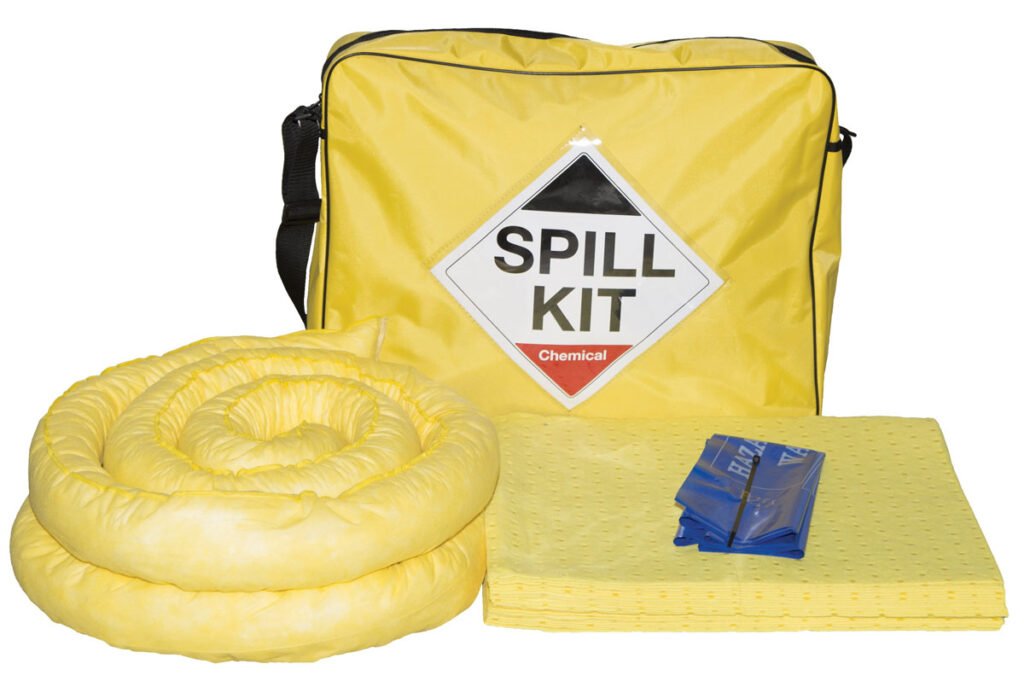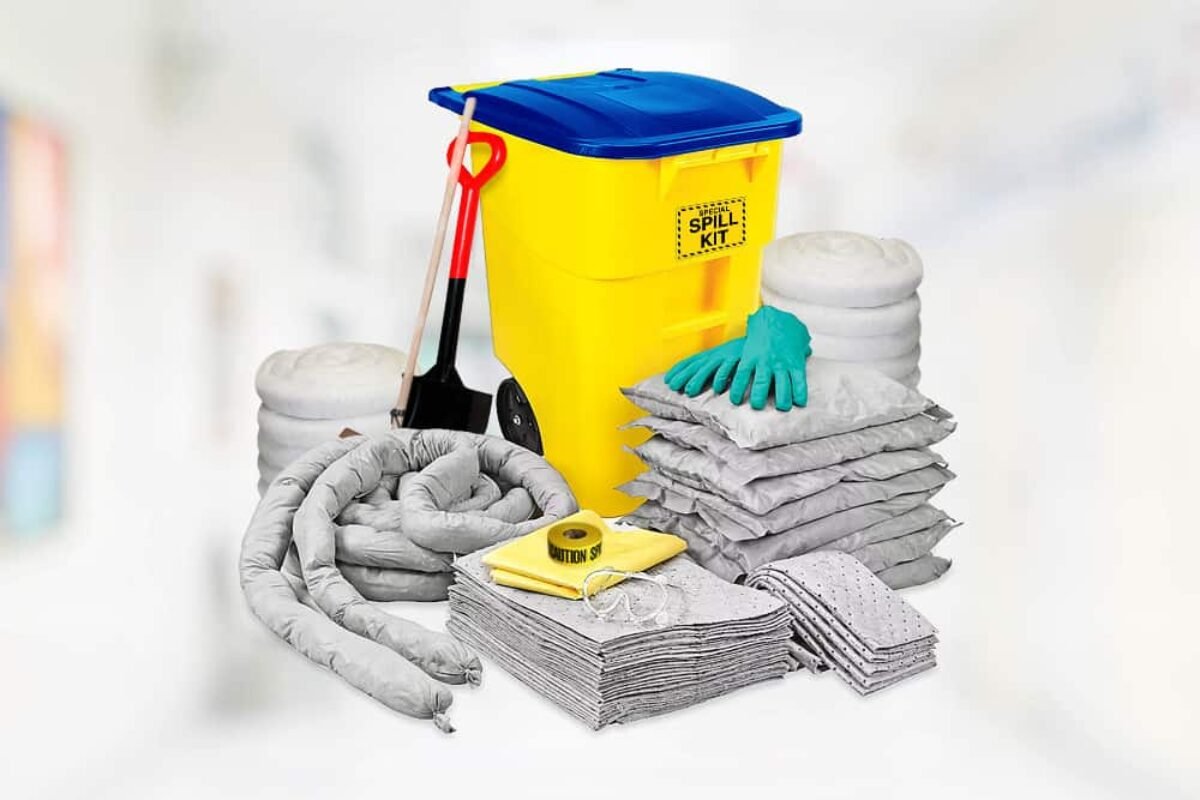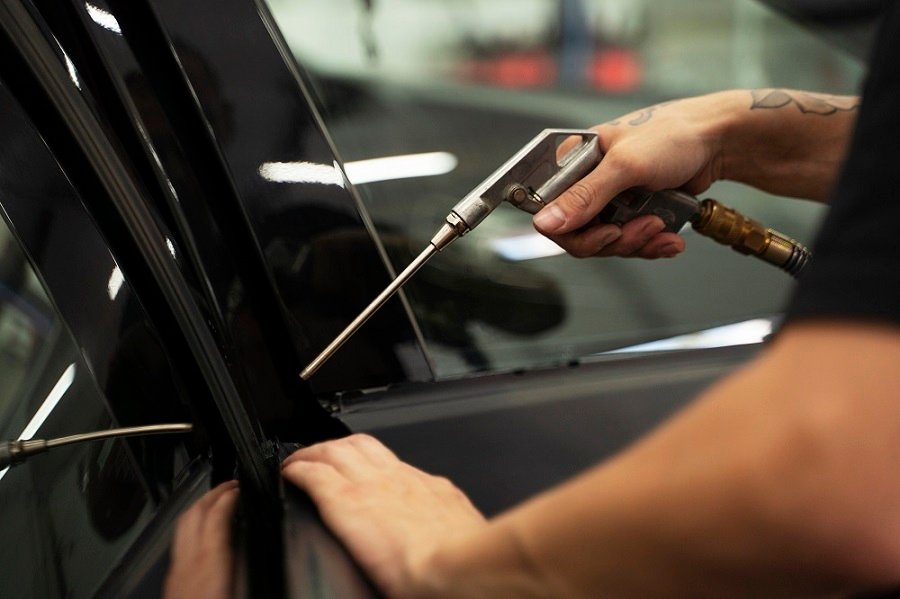Body fluid spill kits are crucial in maintaining hygiene, safety, and infection control in various settings. These kits are designed to effectively handle and manage spills of bodily fluids such as blood, urine, vomit, and other potentially infectious substances. The primary purposes of body fluid spill kits include:
- Infection Control and Prevention: Body fluid spills can carry pathogens, bacteria, and viruses, increasing the risk of spreading infections. Spill kits help prevent the transmission of diseases by providing the necessary tools to properly clean up and disinfect the affected area.
- Healthcare Settings: In hospitals, clinics, and healthcare facilities, body fluid spill kits are essential for dealing with situations where bodily fluids are accidentally released during medical procedures, patient care, or laboratory work. Proper cleanup reduces the risk of healthcare-associated infections.
- Emergency Response: In emergencies like accidents, body fluid spill kits are vital for promptly containing and managing the spills until professional help arrives. This prevents potential exposure to infectious materials and minimises the risk of cross-contamination.
- Laboratory Environments: Laboratories often handle hazardous materials, including biological samples and fluids. Spill kits assist in managing accidental spills to maintain a safe and sterile laboratory environment.
- Public Spaces and Transportation: Public spaces, public transportation, and other communal areas might encounter bodily fluid spills due to accidents or illnesses. Spill kits enable quick cleanup to safeguard public health and prevent the spreading of infections.
- Workplace Safety: In workplaces where employees are at risk of exposure to bodily fluids, such as janitorial staff, body fluid spill kits are essential tools to ensure proper cleanup and minimise potential health hazards.
- Personal Protective Equipment (PPE) Usage: Body fluid spill kits typically include appropriate PPE like gloves, masks, goggles, and aprons. Proper PPE usage is crucial to protect individuals handling the cleanup from potential contamination.
- Regulatory Compliance: Many industries are subject to regulatory requirements for managing hazardous materials and maintaining a safe environment. Having body fluid spill kits on hand helps organisations comply with these regulations.
- Minimizing Environmental Impact: Body fluid spills can harm the environment if improperly managed. Spill kits facilitate proper cleanup and disposal, reducing environmental impact.
- Safe Disposal of Contaminated Materials: Spill kits often include materials for safely collecting and disposing of contaminated materials, ensuring that potentially infectious waste is properly contained and handled.
In summary, body fluid spill kits are essential tools that play a critical role in infection control, maintaining a safe environment, and safeguarding the health of individuals in various settings. Their proper use helps prevent the spread of infections, protects healthcare workers and the public, and ensures compliance with safety regulations.

Here are five steps to consider when selecting spill kit containers:
Selecting the appropriate Spill Kit Containers is crucial for adequate spill response and containment. Here are five phases to guide you through the procedure:
- Assess Spill Risk and Volume: Identify the types of liquids commonly used or stored in your facility. Determine the potential spill risk and estimate the maximum volume of a spill. This assessment will help you choose containers suitable for the types and quantities of substances you deal with.
- Choose Container Types: Depending on your needs, you might require different spill kit containers, such as mobile spill kits, wall-mounted stations, or large storage containers. Mobile spill kits with wheels are ideal for quick response, while wall-mounted stations offer convenience in easily accessible areas. Large storage containers are suitable for the centralised storage of multiple spill kits.
- Consider Container Size: Select container sizes that accommodate the spill response materials required for the spill risks identified. The size of the containers should correspond to the potential spill volumes, ensuring that you have adequate absorbents, PPE, and cleanup tools on hand.
- Evaluate Material and Durability: opt for spill kit containers made from durable materials that withstand various environmental conditions. Look for containers resistant to corrosion, chemicals, and UV exposure. Containers with sealed lids and secure closures prevent moisture and contaminants from affecting the contents.
- Organize and Label: Ensure spill kit containers are organised and labelled clearly for easy identification. Labels should indicate the type of spills the kit is designed for and any specific precautions or instructions. Proper labelling ensures that employees can quickly locate the correct kit in an emergency.
Remember that different industries and facilities have unique requirements for spill response. Whether dealing with hazardous chemicals, oils, or other fluids, tailoring your spill kit containers to your specific needs is essential. Regular maintenance and restocking of spill kits will ensure you’re always prepared to manage spills and minimise potential hazards effectively.



